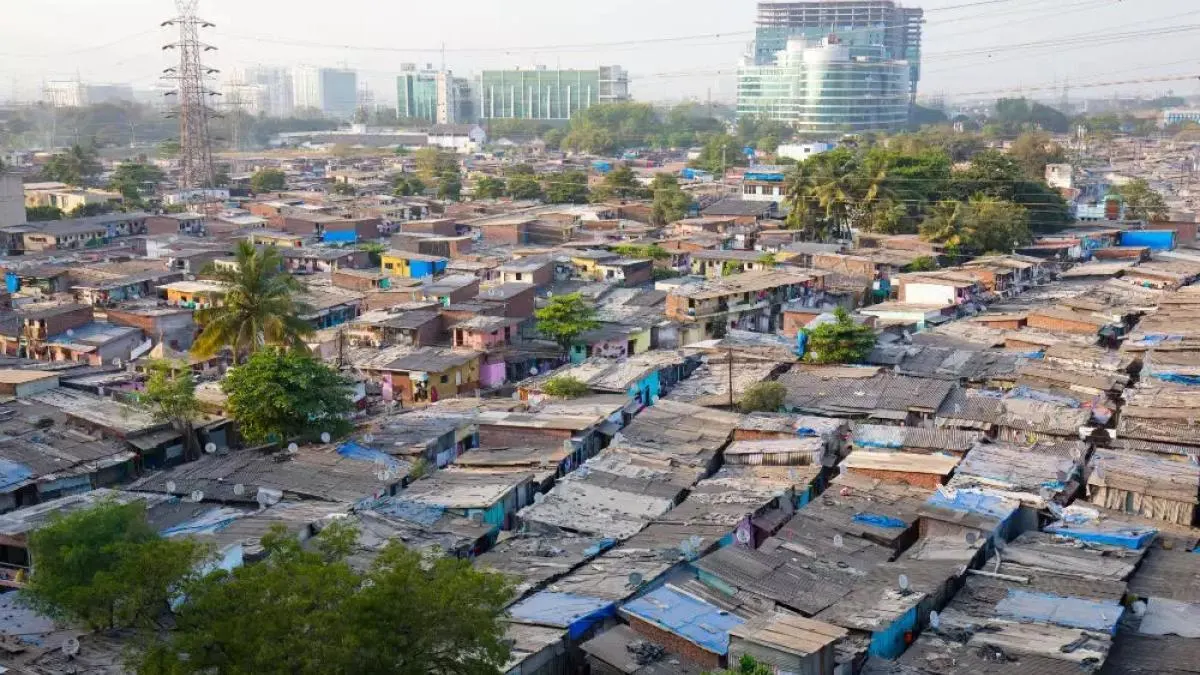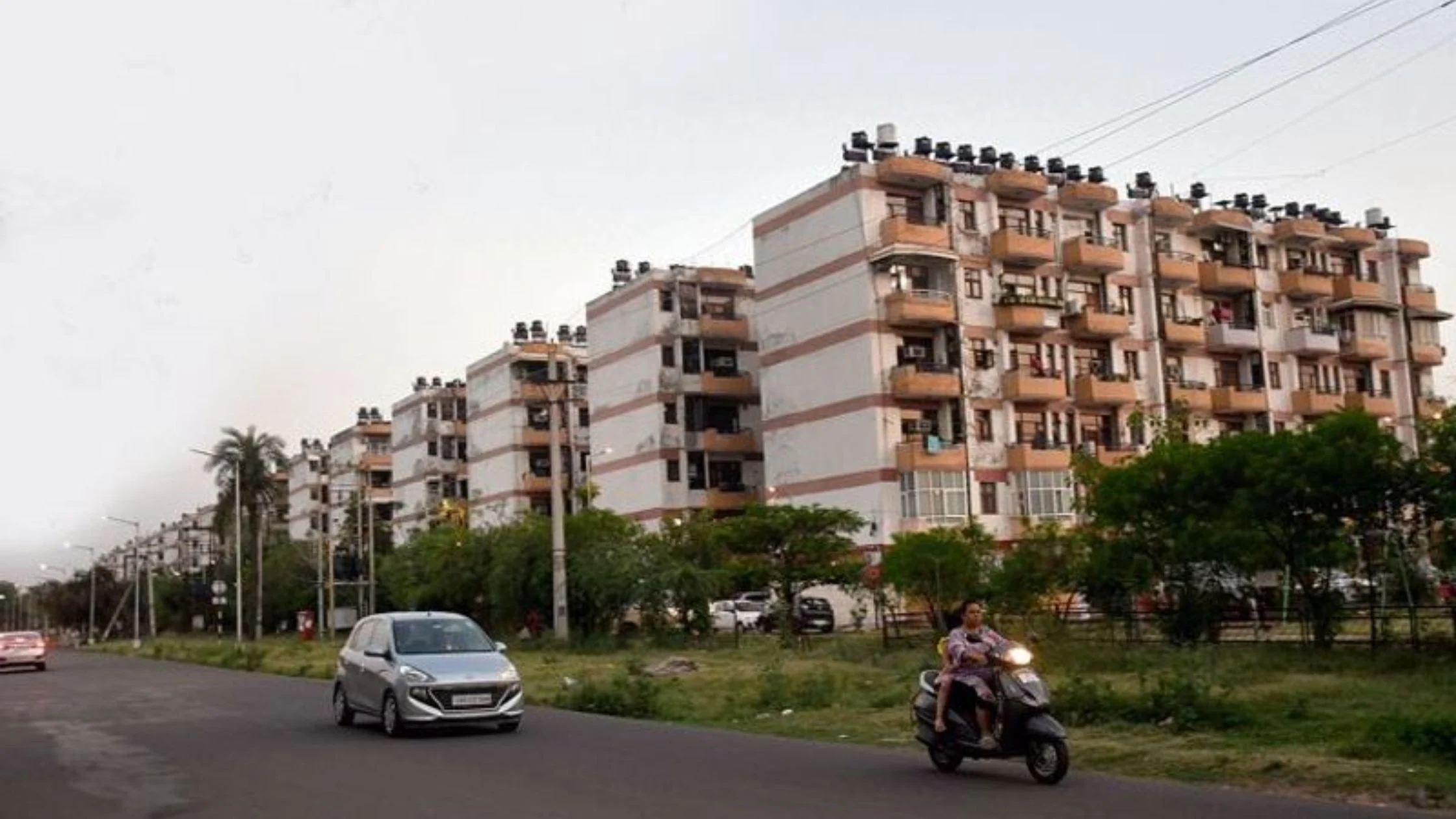Table of Content
- Understanding the Slum Cluster Redevelopment Scheme
- Implementation Framework and Project Model
- Benefits for Developers and Homebuyers
- Government’s Broader Urban Renewal Vision
- Industry and Developer Reactions
- Impact on Mumbai’s Urban Landscape
- Challenges and Key Considerations
- Expert Viewpoint: Toward Sustainable Redevelopment
- Conclusion
The Maharashtra government has given the green light to a new slum cluster redevelopment scheme for Mumbai, a move expected to transform the city’s urban landscape and improve the living conditions of lakhs of slum dwellers. The policy aims to redevelop large, contiguous slum clusters into integrated housing projects, focusing on sustainable design, improved infrastructure, and economic inclusion.
With this approval, the state has taken a major step toward addressing Mumbai’s long-standing housing challenges while boosting private sector participation in redevelopment. The scheme is poised to streamline slum rehabilitation, attract large-scale investments, and accelerate the creation of affordable and organized urban housing.
Understanding the Slum Cluster Redevelopment Scheme
The slum cluster redevelopment scheme for Mumbai focuses on developing large patches of slum land under a unified, cluster-based framework rather than piecemeal projects. Traditionally, slum rehabilitation in Mumbai has been fragmented, with small plots being redeveloped individually leading to inconsistent infrastructure, long project timelines, and limited scalability.
Under this new model, the Slum Rehabilitation Authority (SRA) will oversee cluster identification and project implementation. The key goal is to create self-sustaining, well-planned urban communities equipped with modern amenities such as sanitation, roads, drainage, and open spaces. The scheme also emphasizes generating employment in the construction sector while improving urban living standards.
According to officials, the initiative aligns with the government’s vision of a “slum-free Mumbai”, integrating both social equity and sustainable urban growth.
Implementation Framework and Project Model
The newly approved scheme will apply to clusters covering an area of 50 acres or more, offering developers significant incentives to participate. The SRA will coordinate with local authorities to identify eligible sites and forward proposals to a high-level committee chaired by the Additional Chief Secretary (Housing) for approval.
Developers can implement projects under three main models:
- Joint Ventures with existing landowners or housing societies,
- Private Development under SRA guidelines, and
- Public-Private Partnerships (PPP) where the government collaborates with private entities.
To make these projects financially viable, the state has offered attractive incentives such as higher Floor Space Index (FSI) up to 4 or more in certain cases. The increased FSI allows developers to build more residential and commercial space on the same land parcel, offsetting the cost of rehabilitation.
The scheme will also enable the relocation of slum dwellers from non-developable zones, including Coastal Regulation Zone (CRZ) areas, to suitable cluster redevelopment projects — ensuring inclusivity and environmental compliance.
Benefits for Developers and Homebuyers
The slum cluster redevelopment scheme for Mumbai provides a win-win opportunity for both developers and future homeowners. Developers benefit from simplified clearance processes, higher FSI, and a larger project footprint, making redevelopment projects more commercially viable. By consolidating multiple smaller plots into one large development, they can achieve economies of scale and deliver homes faster.
For homebuyers, especially those looking for affordable and mid-income housing, the scheme promises well-planned, infrastructure-ready communities. Projects under this model will have better access to civic amenities, transportation, and social infrastructure schools, healthcare facilities, and green spaces. Moreover, large-scale redevelopment will enhance the overall livability and safety of these neighborhoods.
Government’s Broader Urban Renewal Vision
The cluster redevelopment initiative is part of the state’s broader strategy to promote sustainable urban transformation. Alongside this scheme, the Maharashtra cabinet also approved several complementary initiatives, including a sewage treatment and reuse policy for 424 urban local bodies. This aims to promote a circular economy through wastewater recycling, aligning with global sustainability standards.
Other major cabinet decisions included:
- Allocation of land for electric bus depots under the state’s green mobility plan.
- Extension of the MACP scheme to benefit non-teaching school staff.
- Approval for judicial infrastructure projects to improve administrative efficiency.
Together, these policies reinforce Maharashtra’s focus on integrated urban planning, infrastructure modernization, and inclusive development.
Industry and Developer Reactions
The real estate industry has widely welcomed the slum cluster redevelopment scheme for Mumbai, viewing it as a long-awaited policy intervention. Industry bodies such as CREDAI-MCHI praised the government’s effort to replace fragmented redevelopment models with an organized, scalable approach.
Rushi Mehta, Secretary of CREDAI-MCHI, said the policy “has the potential to bring uniformity, speed, and transparency to Mumbai’s slum redevelopment ecosystem.” He added that the cluster-based model will encourage reputed developers to participate in rehabilitation projects, ensuring timely delivery and higher-quality construction.
Developers believe this policy could be a game-changer, enabling faster approvals, better financial viability, and integrated planning. It’s also expected to help bridge the gap between affordable housing demand and supply in the city.
Impact on Mumbai’s Urban Landscape
The slum cluster redevelopment scheme for Mumbai is expected to significantly reshape the city’s physical and social fabric. By redeveloping large clusters instead of isolated plots, the scheme promotes efficient land utilization, better road networks, and robust public infrastructure.
Mumbai’s slums currently occupy around 25% of the city’s land area, housing nearly 40% of its population. Redeveloping these areas under a unified plan will help decongest urban pockets, improve sanitation, and create more organized housing layouts.
Additionally, the scheme will stimulate job creation across construction, engineering, and allied sectors, boosting economic growth. It also contributes to increased housing supply, potentially stabilizing property prices in the mid-income segment.
Challenges and Key Considerations
While the policy is ambitious, experts caution that effective implementation will be crucial to its success. Challenges such as land acquisition, rehabilitation disputes, and coordination among multiple stakeholders could slow progress if not managed carefully.
Ensuring transparency in allotment and maintaining the trust of slum dwellers are equally important. The state government and SRA will need to set up robust monitoring mechanisms to oversee project timelines and compliance.
Balancing developer profitability with the rights and needs of slum residents will be central to sustaining the scheme’s credibility. Public engagement and community participation can play a vital role in ensuring smooth execution.
Also Read: MHADA Revises Premium Charges and Payment Terms to Boost Mumbai Redevelopment
Expert Viewpoint: Toward Sustainable Redevelopment
Urban planners and policy experts see the slum cluster redevelopment scheme for Mumbai as a progressive step aligned with global best practices in urban renewal. By focusing on inclusivity, sustainability, and integrated infrastructure, the scheme reflects a shift toward people-centric redevelopment rather than profit-driven projects.
Experts also point out that the initiative could serve as a template for other Indian cities facing similar challenges, including Delhi, Kolkata, and Chennai. As urbanization accelerates, cluster-based redevelopment offers a scalable model to replace unsafe, unplanned settlements with dignified housing.
Moreover, integrating green infrastructure, renewable energy systems, and waste management facilities into these clusters could help Mumbai progress toward a sustainable, climate-resilient city model.
Conclusion
The Maharashtra government’s approval of the slum cluster redevelopment scheme for Mumbai marks a major milestone in the city’s housing and urban development strategy. With a focus on large-scale rehabilitation, modern infrastructure, and environmental sustainability, the scheme holds the promise of transforming slum clusters into vibrant, well-planned communities.
By offering higher FSI, streamlined approvals, and incentives for developers, the policy creates a conducive environment for inclusive growth. While challenges remain, the initiative’s success could redefine Mumbai’s urban landscape, setting a new benchmark for equitable and sustainable redevelopment across India.



_1765444636.webp)
_1765438259.webp)


Ans 1. The scheme focuses on redeveloping large, contiguous slum clusters in Mumbai into well-planned, integrated housing projects with modern amenities, improved infrastructure, and sustainable design.
Ans 2. The Slum Rehabilitation Authority (SRA) will identify eligible clusters, coordinate with local authorities, and approve projects through a high-level committee chaired by the Additional Chief Secretary (Housing).
Ans 3. Developers can participate through joint ventures with landowners, private development under SRA guidelines, or public-private partnerships (PPP) involving government collaboration.
Ans 4. The scheme offers higher Floor Space Index (FSI), simplified approvals, and larger project footprints, making projects financially viable and commercially attractive.
Ans 5. Slum residents will gain access to organized housing, better civic amenities, roads, sanitation, schools, healthcare, and green spaces, improving overall quality of life.
Ans 6. Clusters covering 50 acres or more are eligible, including slums in non-developable zones like CRZ areas, which will be relocated to suitable redevelopment sites.
Ans 7. By consolidating fragmented slums, the policy promotes efficient land use, improved infrastructure, organized housing layouts, and reduced congestion, while boosting employment in construction and allied sectors.
Ans 8. Potential challenges include land acquisition disputes, rehabilitation issues, coordination among multiple stakeholders, and maintaining transparency with slum residents.
Ans 9. The initiative emphasizes green infrastructure, renewable energy, waste management, and climate-resilient planning, aligning with global urban sustainability standards.
Ans 10. Experts suggest that the cluster-based redevelopment model could serve as a template for cities like Delhi, Kolkata, and Chennai facing similar slum and urbanization challenges.